Florence, Pitti Palace. History and masterpieces of the Florentine museum
Palazzo Pitti is a palace in the heart of Florence. Just “across the Arno,” to use a typical Florentine expression, Palazzo Pitti is located a few hundred meters from Ponte Vecchio and can be counted among the most famous symbols of the Tuscan capital. It was built in the 15th century by Luca Pitti, a Florentine nobleman from a rival Medici family, who, according to legend, wished to have a more splendid palace built than the Medici’s on Via Larga. Begun in 1458 (possibly based on a design by Filippo Brunelleschi), construction was slow due to the financial difficulties of the family, who began living in it from 1469.It was then purchased in 1550 by Cosimo I de’ Medici and his wife Eleonora di Toledo, who wished to convert it into the new grand ducal residence.Since then, the Pitti Palace was for centuries the center of power in Tuscany first and then in all of Italy since, after the Medici and Lorraine families, from 1865 it also hosted the Savoy family when Florence became the national capital. Unlike the 14th-century Palazzo Vecchio, to which Palazzo Pitti is connected via the Vasari Corridor, whose austere profile still captures the fantasies of travelers because of the grandeur with which it soars over Piazza della Signoria, Palazzo Pitti embodies like perhaps no other Florentine building the spirit of the Renaissance.
The palace, as anticipated, still bears the name of its first owner, Florentine merchant Luca Pitti. It was in the next century, however, that Palazzo Pitti experienced a decisive development when, in 1549, it was purchased by Eleonora di Toledo, wife of Cosimo I de’ Medici, who wanted to make it her own place of representation. The extension project was thus entrusted to Bartolomeo Ammannati, who renovated and enlarged the main body of the building and opened, at the back, the Boboli Gardens, one of the most splendid Italian gardens in the world.The idea was to combine art and nature (so much so that the Boboli Garden itself is filled with works of art, from Buontalenti’s Grotto to the spectacular amphitheater designed by Niccolò Pericoli known as Il Tribolo and Giulio Parigi, from the sculptures of Baccio Bandinelli and Vincenzo de’ Rossi to the Roman sculptures scattered throughout the park), in a dialectic that would later inspire several other residences of European rulers. Further expansion finally occurred during the Lorraine era, when the two side wings that now give the palace its characteristic shape, as well as the porticoes and terraces, were built. Today, the Pitti Palace is part of the museum hub under the Uffizi (in fact, it depends on the Vasarian museum) and is home to several institutes: the Palatine Gallery and the Royal and Imperial Apartments, the Treasury of the Grand Dukes (formerly known as the “Silver Museum”), the Gallery of Modern Art, and the Museum of Fashion and Costume.
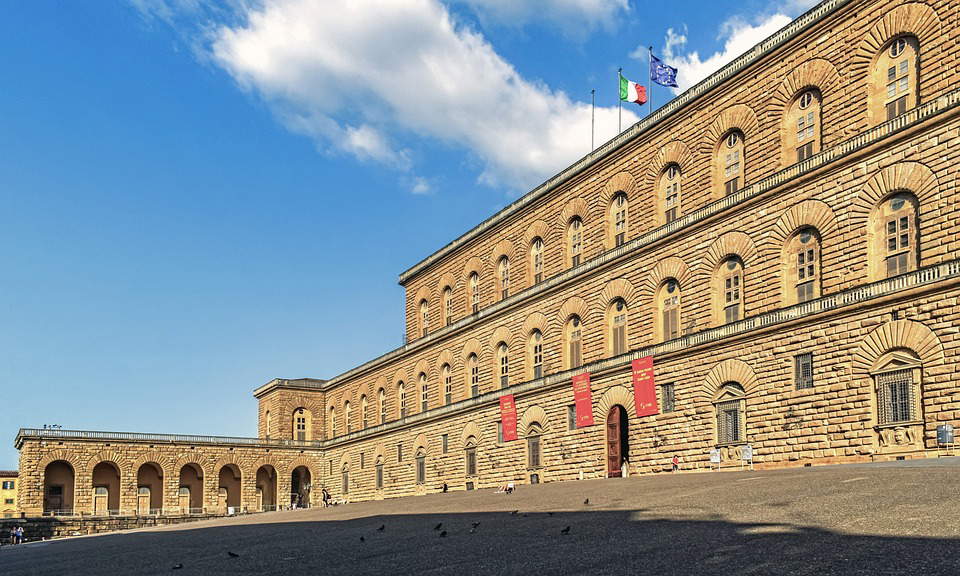
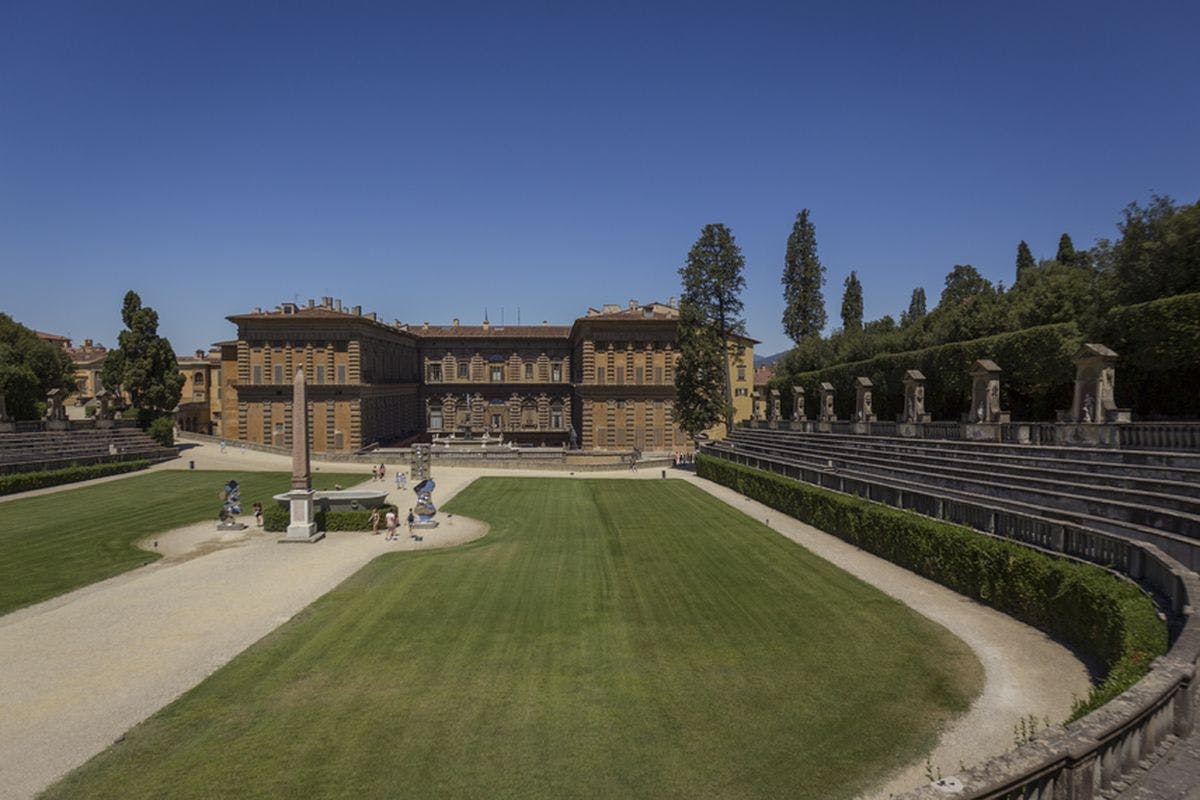
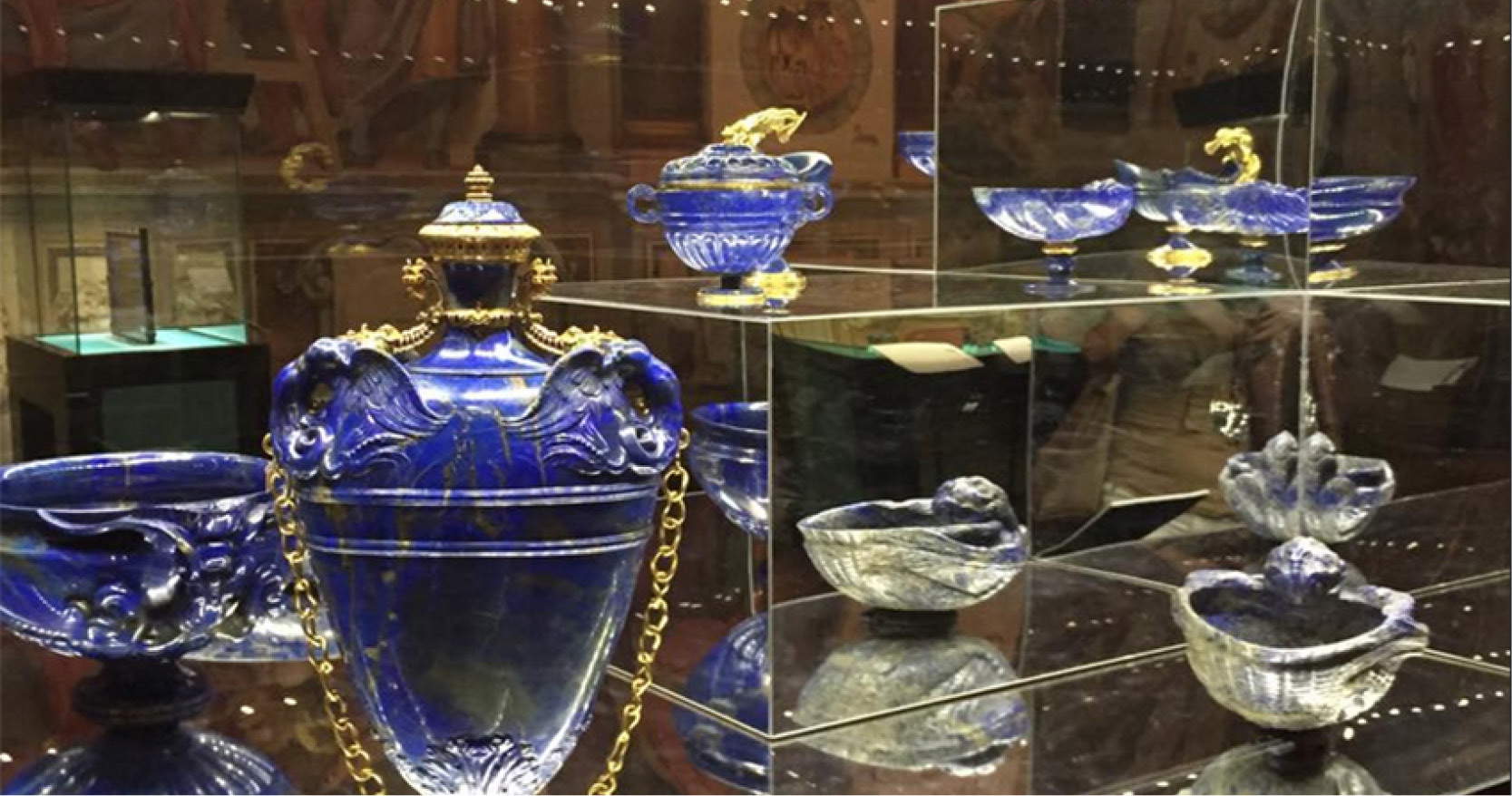
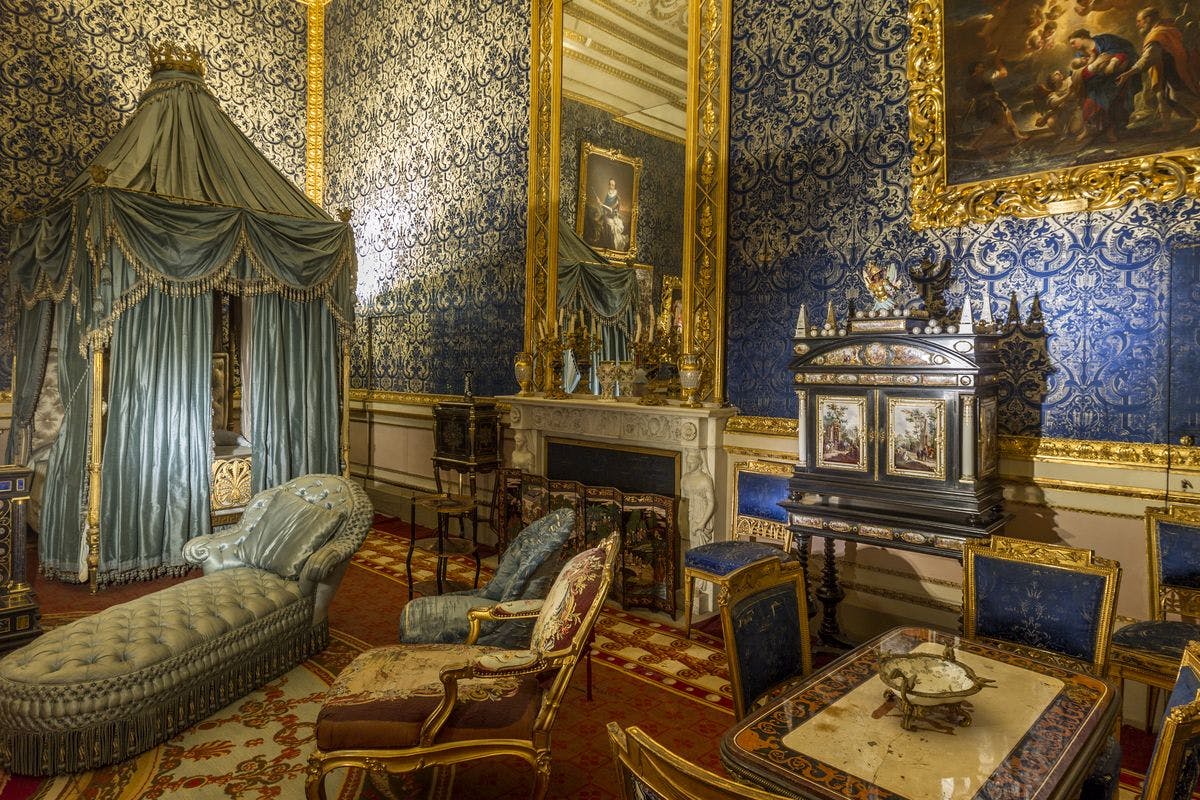
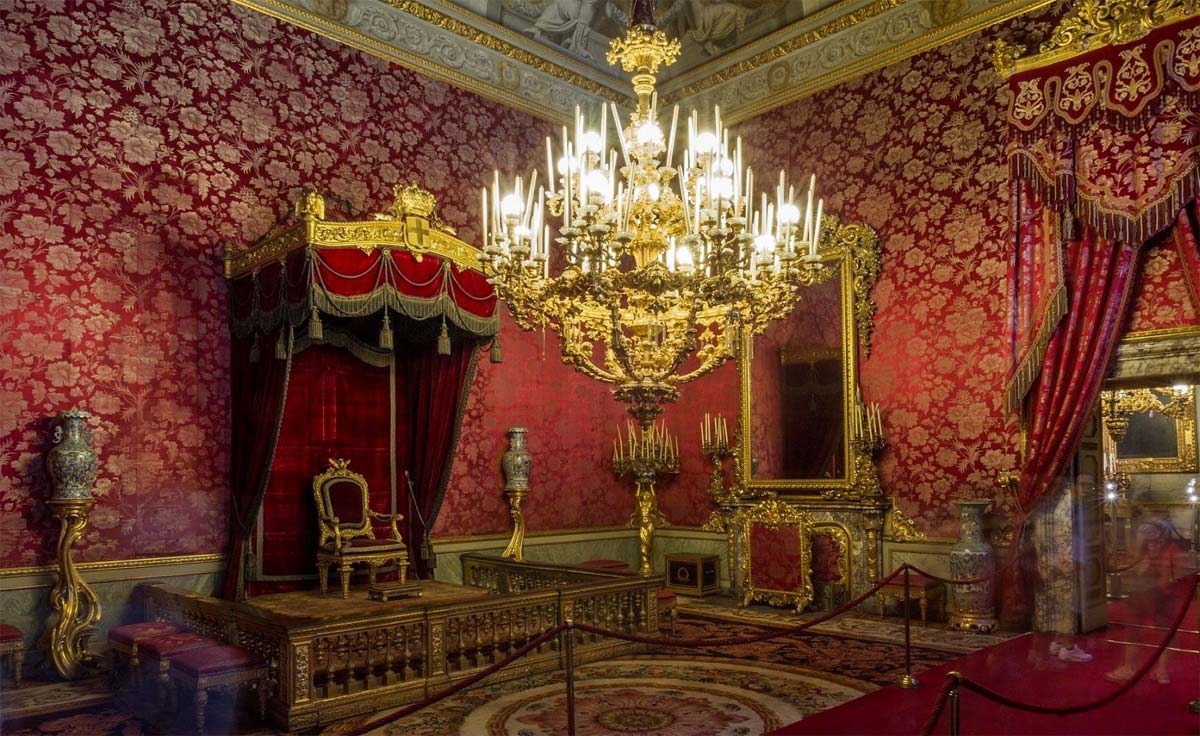
Beginning a tour of the Pitti Palace, one immediately finds, on the ground floor and mezzanine, the Treasure of the Grand Dukes: gold and jewelry, silverware, precious vases, ivories, crystal, and works in semi-precious stones, gathered over centuries of Medici collecting (there are also objects that belonged to Lorenzo the Magnificent). The Treasury of the Grand Dukes is arranged in what was once the Medici’s summer apartment: the walls of these rooms were frescoed between 1634 and 1641 by Angelo Michele Colonna and Agostino Mitelli, in view of and following the marriage between Ferdinando II de’ Medici and Vittoria della Rovere (celebrated in 1637), and are among the earliest examples of quadraturism in Florence. The Palatine Chapel, on the other hand, embodies well the late 18th-century taste put into practice by architect Bernardo Fallani and painter Luigi Ademollo, who were responsible for decorating the chapel walls and vestibule with paintings of biblical and evangelical subjects. Also on the ground floor is the new Museum of Russian Icons, opening in early 2022. It is one of the most important museums of its kind in the world since it preserves the oldest collection of Russian icons found outside the territories of ancient Rus’, an area corresponding to present-day Western Russia, Ukraine, and Belarus. These are works executed between the late 16th and mid-18th centuries: the oldest icons were already part of the Medici collections and are attested in the inventories of the Chapel of Relics in the Pitti Palace in the mid-17th century. The largest nucleus, however, is from the 18th century and is due to the collecting of the Lorraines.
Going up to the main floor of the Pitti Palace are the Palatine Gallery and the Royal Apartments. Here one can stroll through the history of national and international art among the paintings of many of the greatest artists in the history of Italian art, interspersed with Roman sculptures or those of modern artists, vases and tables of semi-precious stones according to the model proper to seventeenth-century picture galleries. Also very interesting is the series of frescoes painted by Pietro da Cortona for Ferdinando II de’ Medici between 1640 and 1647 in the so-called “Halls of the Planets” (the Hall of Saturn, the Hall of Jupiter, the Hall of Apollo, the Hall of Mars, and the Hall of Venus), and the masterpiece represented by the 1637 frescoes in the Hall of the Stove (the Golden Age, the Silver Age, the Bronze Age, and the Iron Age).
Caravaggio, Botticelli, Vasari, Tintoretto, Raphael, Titian, Artemisia Gentileschi, Lavinia Fontana, Federico Barocci, the Cigoli, Pieter Paul Rubens, Guido Cagnacci, Salvator Rosa, Carlo Dolci: the list of great artists whose works are on display in the halls of the Palatine Gallery of the Pitti Palace is really long. The Prometheus room is the one devoted to the oldest paintings in the collection, from the Florentine Renaissance among which stand out some paintings by Sandro Botticelli such as the Portrait of a Young Man (1470), the Portrait of a Young Woman (1485), the Madonna and Child and St. John (1495), and the Madonna and Child, St. John and the Archangels Michael and Gabriel (1485). In the Hall of Saturn, where in ancient times the Grand Duke held his audiences, is the most substantial nucleus of Raphael’s works from the Madonna of the Grand Duke (c. 1506) to the unfinished Madonna of the Canopy, to works of full stylistic maturity stylistic maturity such as the Portrait of Tommaso Inghirami (c. 1510), the Madonna della Seggiola (c. 1513-1514), of great tenderness and sublime in the drafting of the painting, monumental and at the same time sweet family scene, and the very famous Velata. In the Hall of the Education of Jupiter, on the other hand, Caravaggio’sSleeping Cupid (1608) stands out. On the other hand, four works by Titian can be found in the Venus Room: the Concert, an early work; the Portrait of Julius II, copied from Raphael (a work at the National Gallery in London), but different in its results especially related to Titian’s masterful use of color; the Bella, painted for the Duke of Urbino (1536); and the Portrait of Pietro Aretino (1545), while in the Apollo Room it is possible to admire the Penitent Magdalene. Also in the Hall of Jupiter is an important work by Rubens, the Madonna of the Basket. On the other hand, masterpieces such as Tintoretto’s Portrait of Alvise Cornaro or Guido Cagnacci’s Magdalene Taken to Heaven, and two works by Rubens, the Four Philosophers el and Consequences of War, are preserved in the Hall of Mars. The imperial and royal apartments, on the other hand, occupy the fourteen state rooms of the piano nobile, located in the right wing of the Pitti Palace, all sumptuously furnished with furniture from the Medici, Lorraine and Savoy collections and are a tangible trace of the succession of the various dynasties.
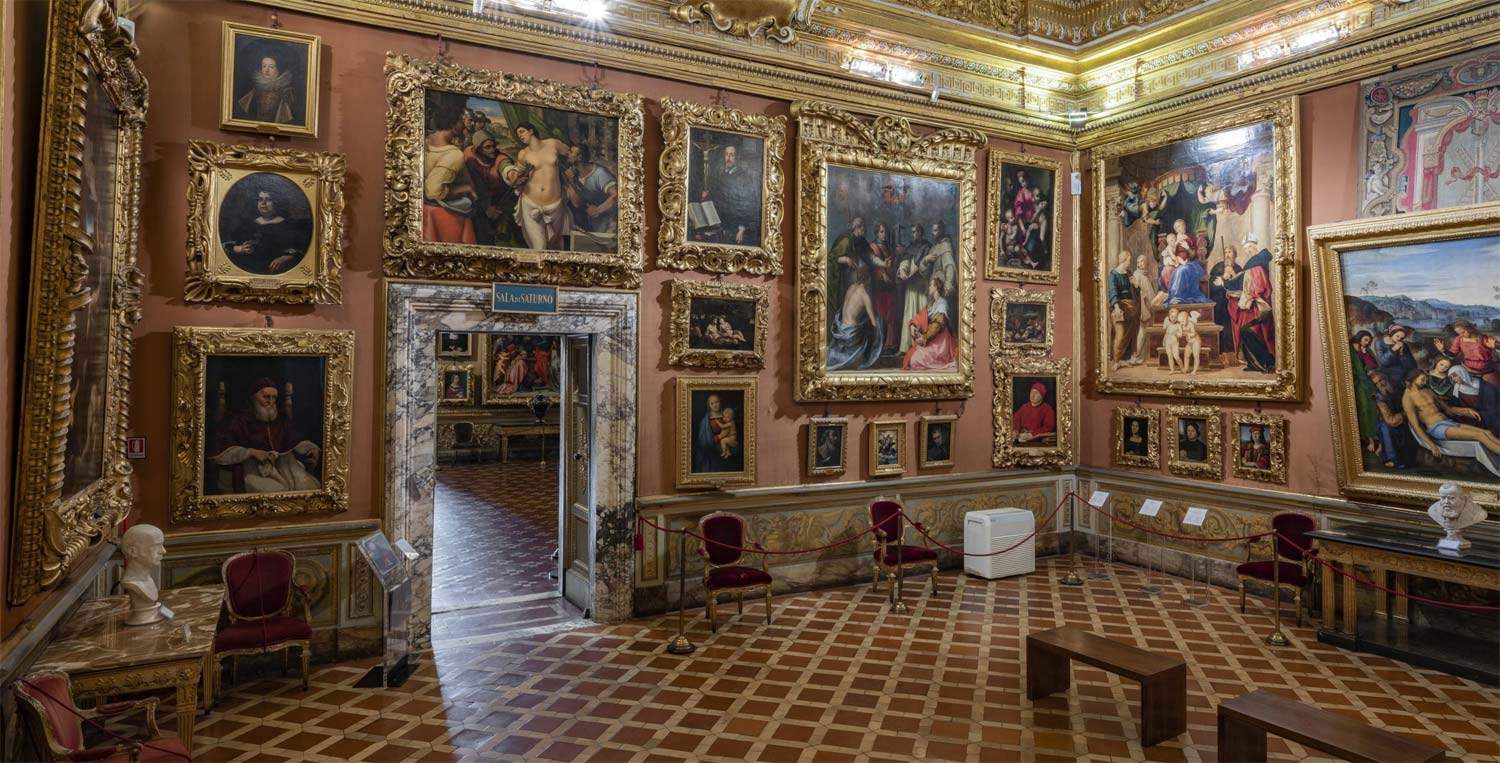
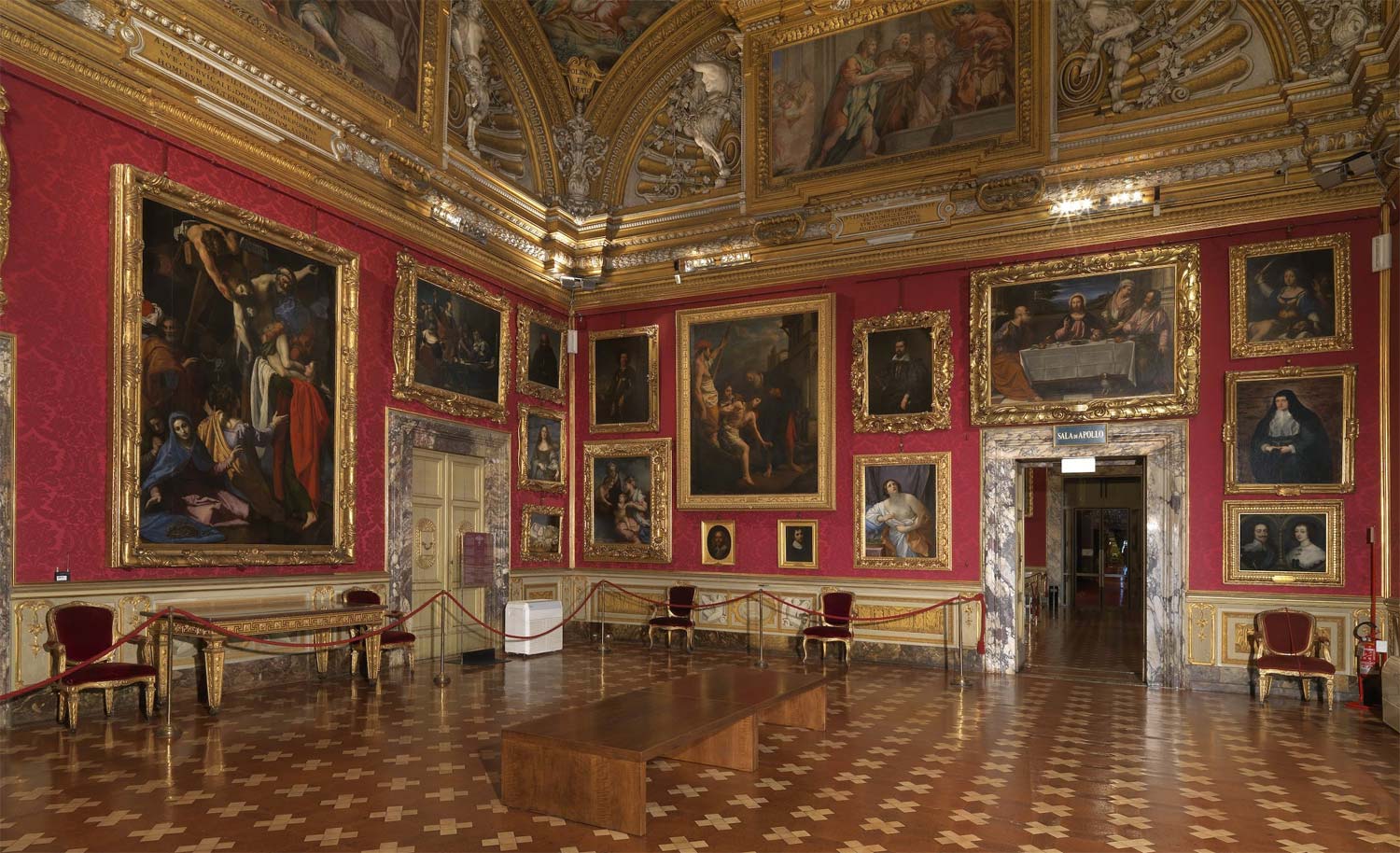 Hall of
Hall of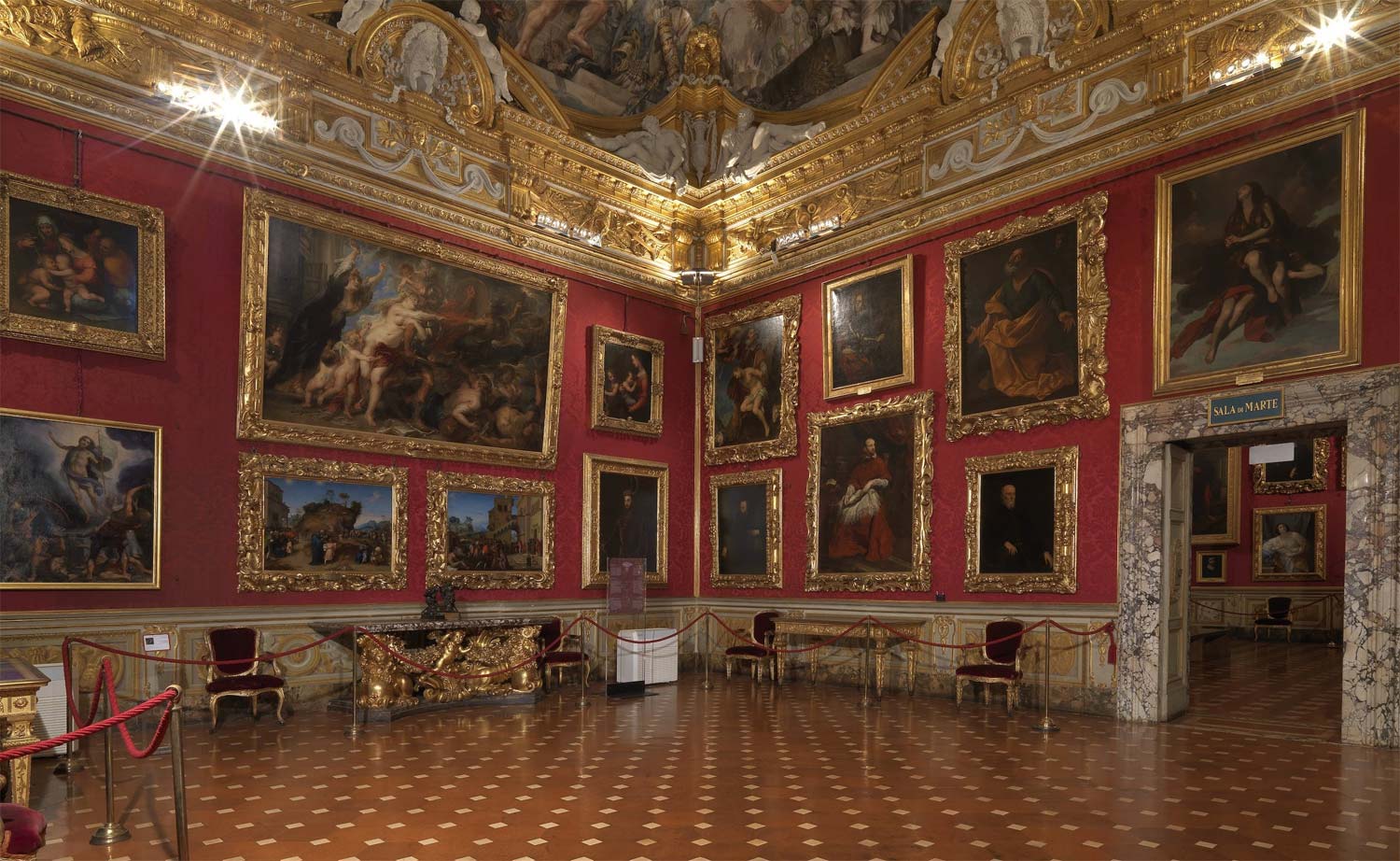 Hall of
Hall of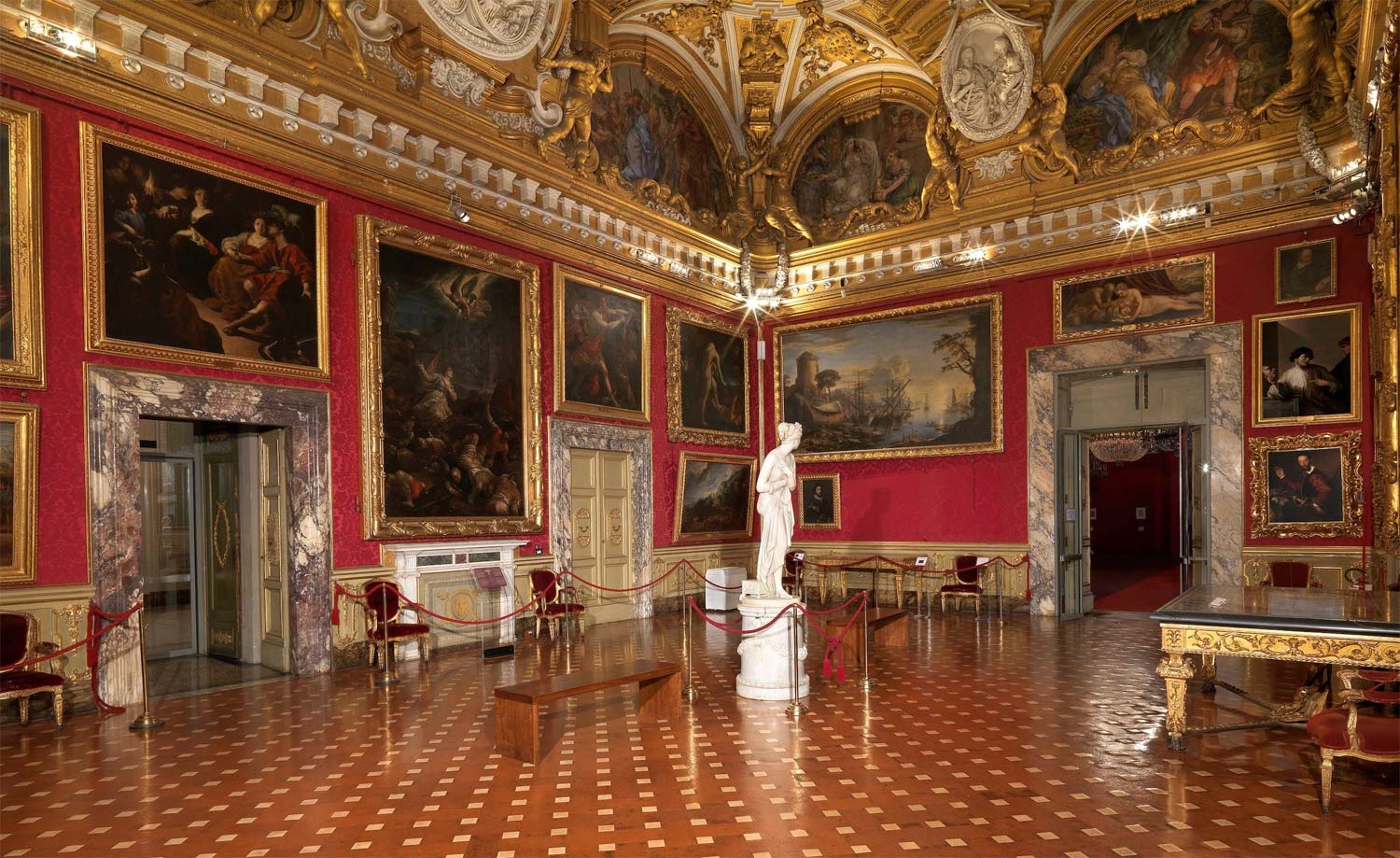 Hall of
Hall of
Going up to the second floor, in the apartments once the residence of the Lorraine family, one instead takes a trip forward centuries. Here is the Gallery of Modern Art, from which one can enjoy a magnificent view of both Florence and the Boboli Gardens. Here its collections range from the late eighteenth century to the early decades of the twentieth century and preserve masterpieces of Neoclassicism and Romanticism and an important nucleus of paintings from the school of the Macchiaioli starting with Giovanni Fattori’s famous landscapes of the Maremma, and then more works by Francesco Hayez, Silvestro Lega, Telemaco Signorini, Camille Pissarro (two of his works are found here: they were the first Impressionist paintings to arrive in Italy), and many others. The Galleria d’Arte Moderna is famous for its collection of Macchiaioli and, in particular, of works by Giovanni Fattori includingSelf-Portrait (1854), The Italian Camp after the Battle of Magenta (1862), Cousin Argia (1861), The Stirruped (1880), The Rotunda of Bagni Palmieri (1866), Libecciata (1880-1885) the Portrait of the Stepdaughter (1889). Silvestro Lega ’s Il canto dello stornello (1867) stands out instead, while Telemaco Signorini ’s Leith (1881). An entire room is instead dedicated to the legacy of Diego Martelli, a great art critic and main “sponsor” of the Macchiaioli.
In the Palazzina della Meridiana, leaning against the southern wing of the Pitti Palace, we then find the Fashion and Costume Museum, which houses clothes and accessories from the 18th century to the present day, as well as lingerie, jewelry and costume jewelry, and then more stage costumes from famous films, plays and operas. Of great significance, then, is the large Boboli Garden that extends behind the Pitti Palace. Ancient and Renaissance statues, grottoes, and fountains make this vast city park one of the most important examples of Italian gardens and a source of inspiration for so many European courts.
Palazzo Pitti is located in the square of the same name a few hundred meters from the Palazzo Vecchio, for information on opening hours and tickets you can consult the website. If you arrive by train, the nearest station is Santa Maria Novella from here you can take a bus or cab or walk for about 20 minutes. The same station is connected to Florence Peretola Airport by public services. By car, however, it is advisable to look for parking in the Porta Romana area.
 |
| Florence, Pitti Palace. History and masterpieces of the Florentine museum |
Warning: the translation into English of the original Italian article was created using automatic tools. We undertake to review all articles, but we do not guarantee the total absence of inaccuracies in the translation due to the program. You can find the original by clicking on the ITA button. If you find any mistake,please contact us.



























